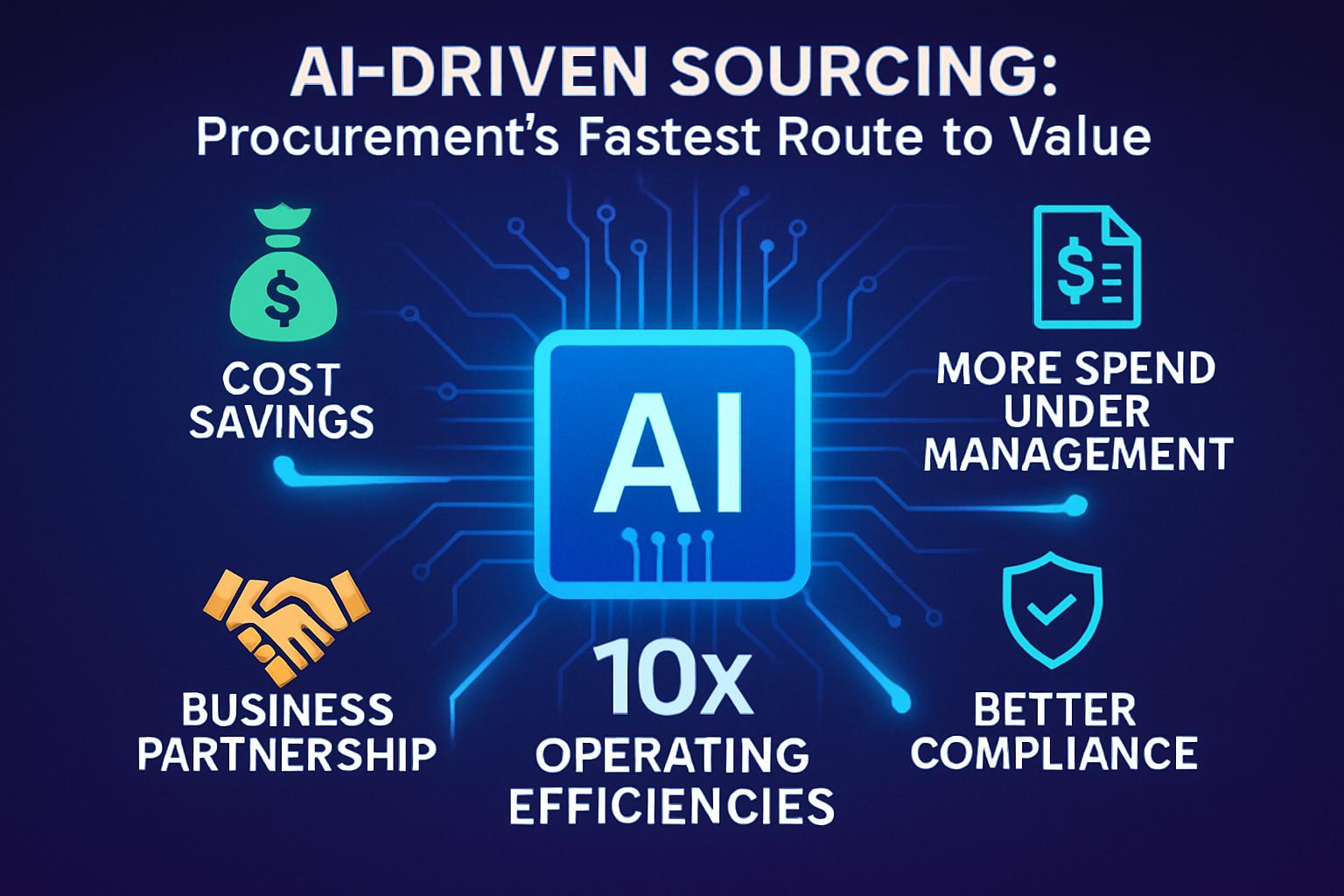The Quickest Way a CFO Can Use AI to Improve The Bottom Line

As the buzz around AI, and gen AI in particular, refuses to die down all CFOs are on the hook from their CEOs and boards to find use cases for this game-changing technology that deliver instant upticks in productivity and efficiencies while reducing OpEx and positively impacting the bottom line. A select group of innovators have identified that procurement is the lowest-hanging fruit out there, enabling enterprises to drive more value from their company spend by implementing enterprise-wise procurement mandates.
They are adopting AI-driven sourcing and spend management technology to ensure that all third-party spend is tendered fairly, competitively, and transparently — with the right guardrails and policies in place to maintain compliance and risk management. As a result, these CFOs are instantly able to get more visibility, control and assurance of buying the right goods and services at fair market prices across all of their expenditures.
Global 2000 companies spend billions of dollars each year but legacy procurement processes and technology mean that many employees simply bypass the designated systems and engage in ‘maverick’ or ‘rogue’ spend as they need to be able to execute their jobs in the marketing, R&D, technology, human resources, real-estate and other functions in the company with a reasonable degree of speed and simplicity.
But forward-thinking finance leaders have identified autonomous sourcing as the answer to this conundrum – the user-friendly, consumer-like experience means using this technology for all company spend above a certain threshold is one mandate that their workforce is happy to embrace.
Let’s look at what CFOs need to consider in order to encourage participation in the process and make sure procurement mandates drive their companies toward the goal of delivering savings, reduced operating expenses and improved business results.
Why more companies are choosing mandates
Traditionally, mandates haven’t always been welcomed by employees, particularly those within the “frozen middle” of organizations where there’s a large disconnect between the declared company strategy and operational imperatives and ultimately the execution by mid-level managers. However, employees will often take the path of least resistance and not follow recommended business processes and practices as they know there are no consequences for doing so, as long as they don’t exceed their budget. While this ensures budgets are not surpassed, it also ensures companies WILL get less for more within that budget.
With mandates, CFOs can quickly and effectively encourage the behaviors needed to deliver on business goals, principally more efficient cost control and adding strategic value. That’s why we’re seeing more enterprises adopt this strategy.
CFOs are also realizing that being nimble and being buttoned up are not mutually exclusive. In fact, mandates can increase efficiency and agility, especially within procurement where improved spend management directly impacts the bottom line.
Making it easy for employees to comply
For mandates to succeed, they need to be easy for every employee to comply with. It’s straightforward enough to create mandates that are clear and reasonable, such as: “Anyone spending more than a specific dollar amount on a service must participate in the procurement process.” What’s more critical is ensuring the underlying processes for the protocol you’re mandating are easy to use.
If employees are using outdated procurement systems that are difficult or cumbersome, then they’re going to struggle to comply. If you empower people with self-serve, intuitive AI-powered technology, it will make them want to use the mandated platform on an ongoing basis.
Take travel booking, for example, which used to be an agent-based travel management function. Once employees were empowered with the technology to compare rates, flight times, routes and seats, they could pick the best option that worked for them and for the company. This same model applies for CFOs looking to implement procurement mandates for all of their external spending. By giving employees user-friendly, digital solutions with a modest set of guardrails, you’ll empower them to be their own buyer and simplify compliance.
Autonomous sourcing technology enables CFOs to set mandates without having to fear the reverberation of noise – complaints that it’s too hard to comply or business stakeholders continuing to work in their old, archaic way of email and spreadsheets before going into the system right at the end of the process simply for compliance purposes. While democratizing how an organization buys everything it needs – putting the purchasing decisions in the hands of the experts who own the budgets and allowing them to work however they want – this new model ensures issues such as risk management and ESG targets are adhered to while also improving the bottom line.
Procurement mandates deliver instant cost savings
Successful implementation of a buying mandate means substantially more company spend will be managed by technology with new efficiencies and competition across a transparent, inclusive sourcing process that drives your costs 10-20% lower from day one. This fundamentally leads to either more for less, improvement to the company’s bottom-line (and therefore employee bonuses and shareholder returns) or conscious reinvestment in critical growth initiatives.
CFOs who invest in AI-driven sourcing and spend management solutions will find that mandating their use by the business is far easier than has often been the case in the past and that their organizations will both enjoy value from day one and be better positioned to manage the bottom line in the long term.
Click here to request a demo of the market leading automated spend management platform for instant improvements to your bottom line.



